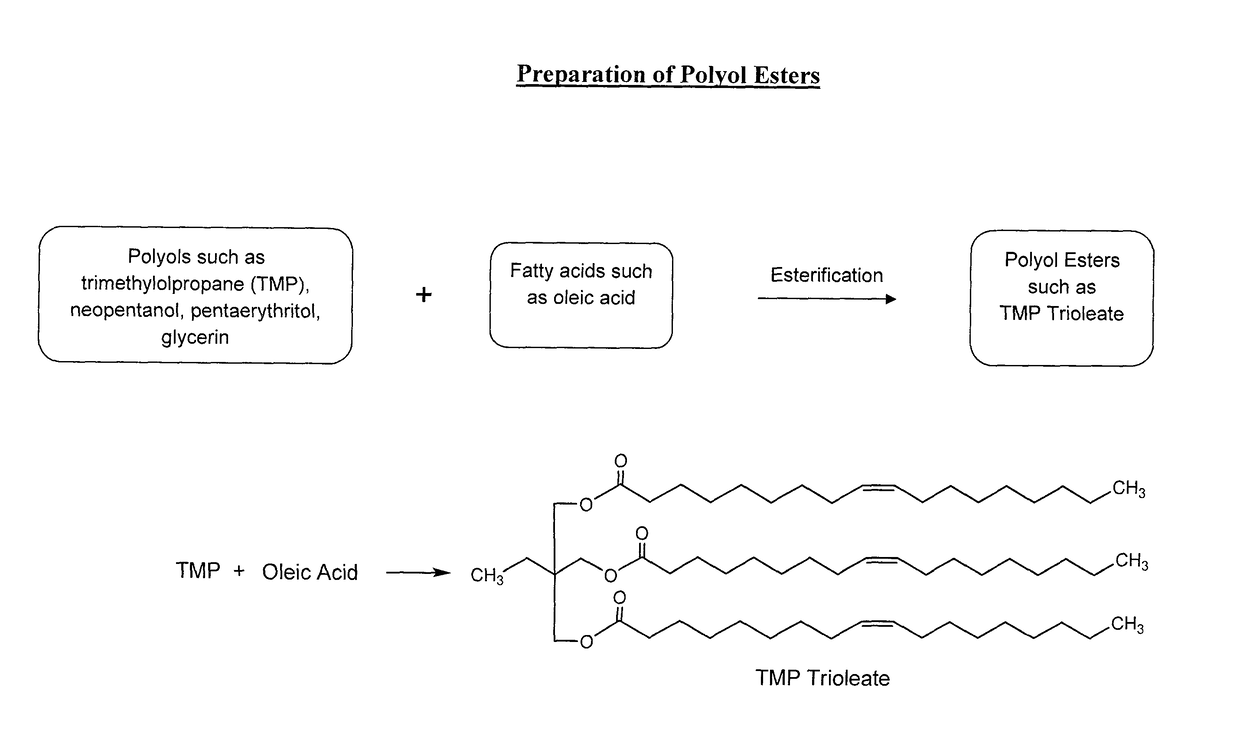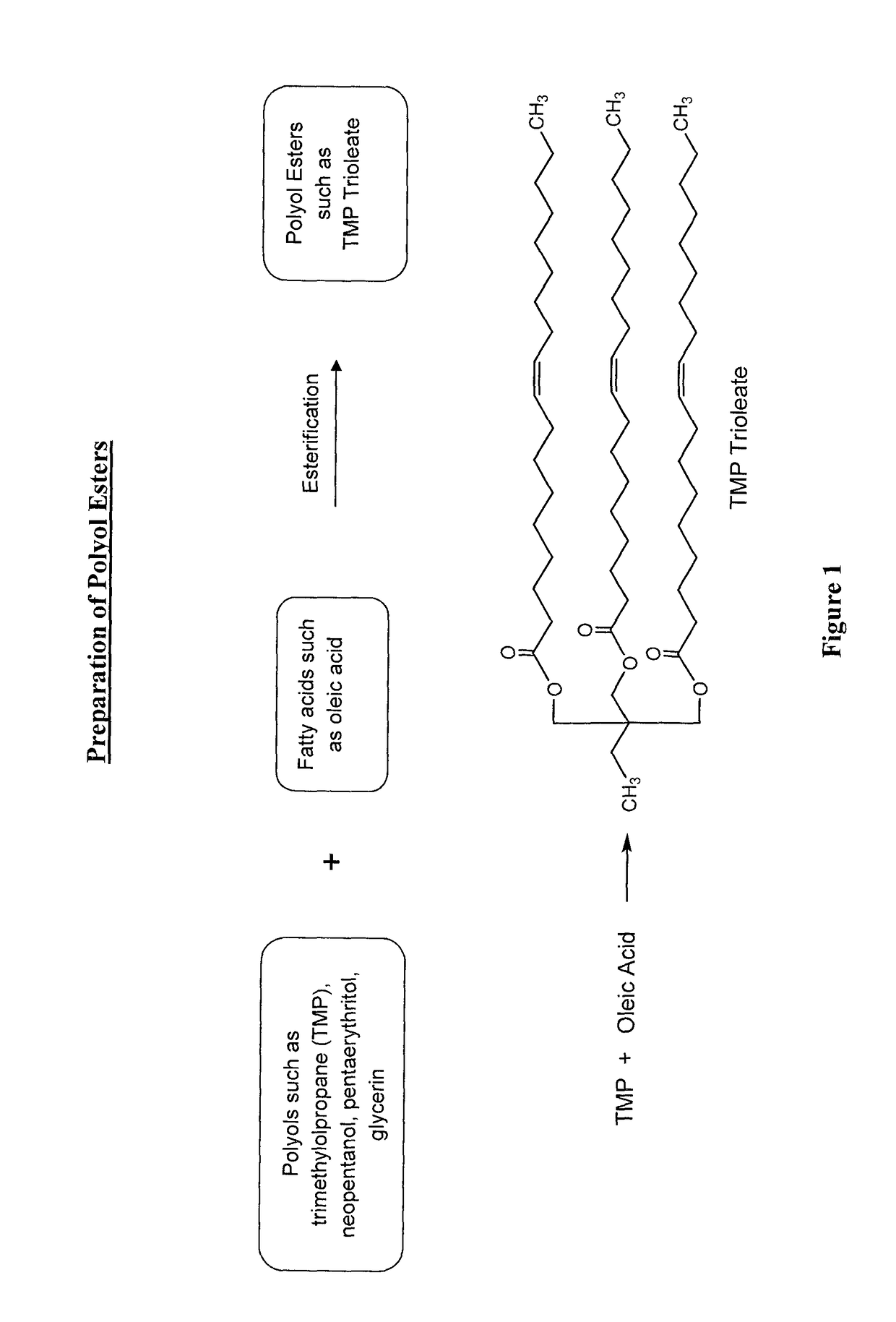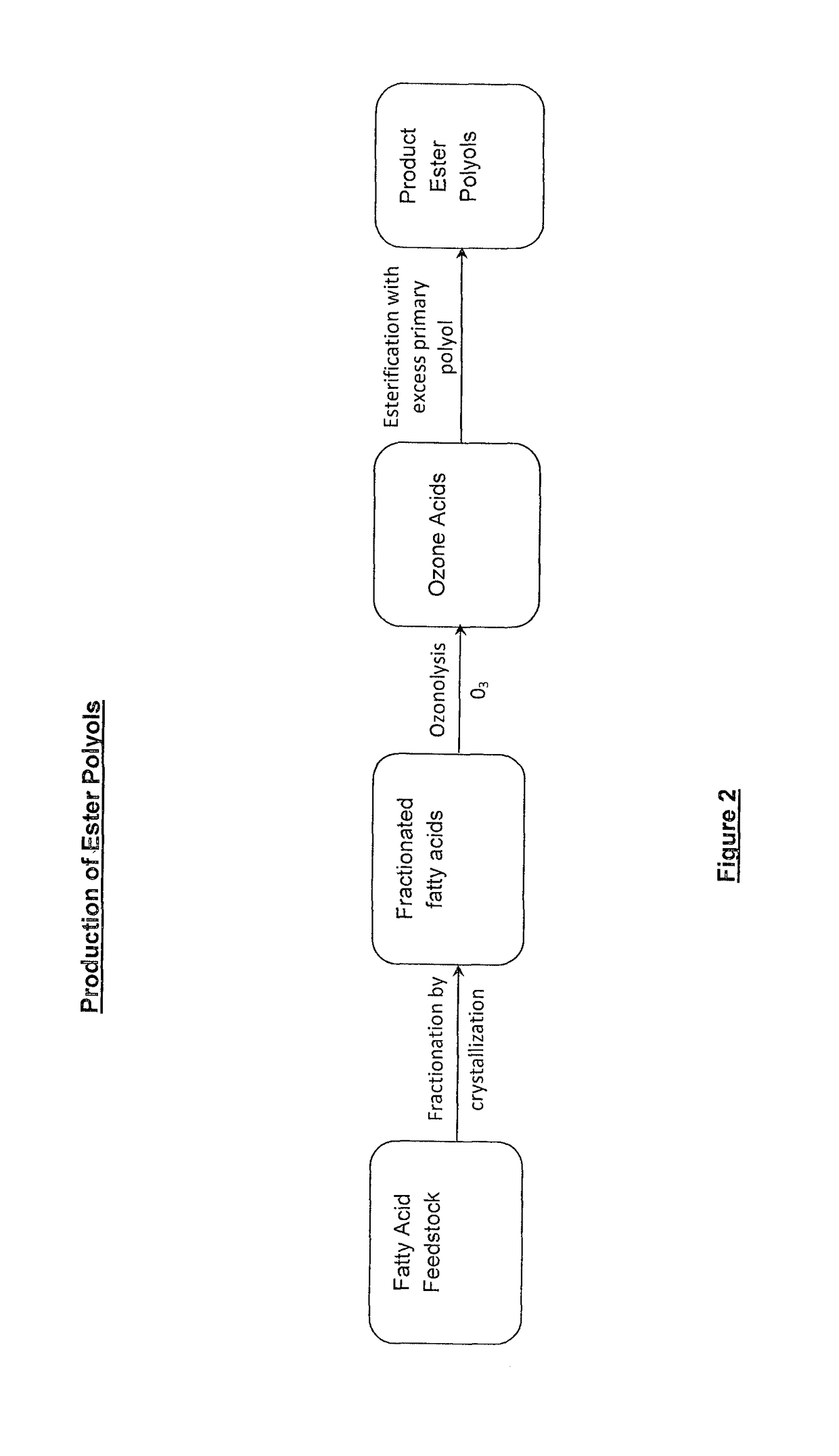Lubricant composition of matter and methods of preparation
a technology of ester polyol and lubricant composition, which is applied in the direction of fatty acid chemical modification, fatty acid oxidation, organic chemistry, etc., can solve the problems of high pour point of polyol esters and insufficient separation step to remove all saturates, etc., to achieve low pour point, good thermal stability, and low volatility
- Summary
- Abstract
- Description
- Claims
- Application Information
AI Technical Summary
Benefits of technology
Problems solved by technology
Method used
Image
Examples
example 1
[0167]This example is representative of the ester polyol ester (LRB 52921-101-21) produced from the ozone acids expected from the oxidative ozonolysis of fractionated PFAD. These simulated ozone acids from normal fatty acid distribution of fractionated PFAD were esterified with TMP with the addition of additional hexanoic acid to adjust the DMR to 0.05. The reactants were mixed in the round bottom flask fitted with a gas inlet tube fitted with a gas dispersing block, a Vigareux distillation column fitted with a cooled condenser and collection flask to collect distilled water. The mixture was initially homogenized at 100° C. using mechanical stirring. The temperature was increased to 160° C. to activate the catalyst. Water generated during esterification process was collected in the receiver flask. The temperature was then increased to 210° C. for several hours until the rate of water generated was low. In order to drive the esterification to near completion, inert gas (such as argon...
example 2
rocess Using Tallow Based Ozone Acids
Step 1
[0169]Azelaic acid (Emery 1110): 28.54%
[0170]Pelargonic acid (Emery 1202): 35.69%
[0171]TMP: 35.77%
[0172]Catalyst: 0.06%
Step 2
[0173]Pelargonic acid (Emery 1202): 46.8%
[0174]Catalyst: 0.06%
[0175]The reactants were mixed in the round bottom flask fitted with a gas inlet tube fitted with a gas dispersing block, a Vigareux distillation column fitted with a cooled condenser and collection flask to collect distilled water. The mixture was initially homogenized at 100° C. using mechanical stirring. The temperature was increased to activate the catalyst. The temperature was then increased to 180° C. and subsequently to 210° C. In order to drive the esterification to near completion, inert gas was sparged into the reaction mixture at a rate of 0.5 SCFH. The reaction was deemed complete when the acid value (AV) was less than 1 mg KOH / g. The ester polyols are then esterified or capped with Emery 1202 carboxylic acids to generate ester polyol esters.
Res...
PUM
| Property | Measurement | Unit |
|---|---|---|
| pour point | aaaaa | aaaaa |
| pour point | aaaaa | aaaaa |
| pour point | aaaaa | aaaaa |
Abstract
Description
Claims
Application Information
 Login to View More
Login to View More - R&D
- Intellectual Property
- Life Sciences
- Materials
- Tech Scout
- Unparalleled Data Quality
- Higher Quality Content
- 60% Fewer Hallucinations
Browse by: Latest US Patents, China's latest patents, Technical Efficacy Thesaurus, Application Domain, Technology Topic, Popular Technical Reports.
© 2025 PatSnap. All rights reserved.Legal|Privacy policy|Modern Slavery Act Transparency Statement|Sitemap|About US| Contact US: help@patsnap.com



